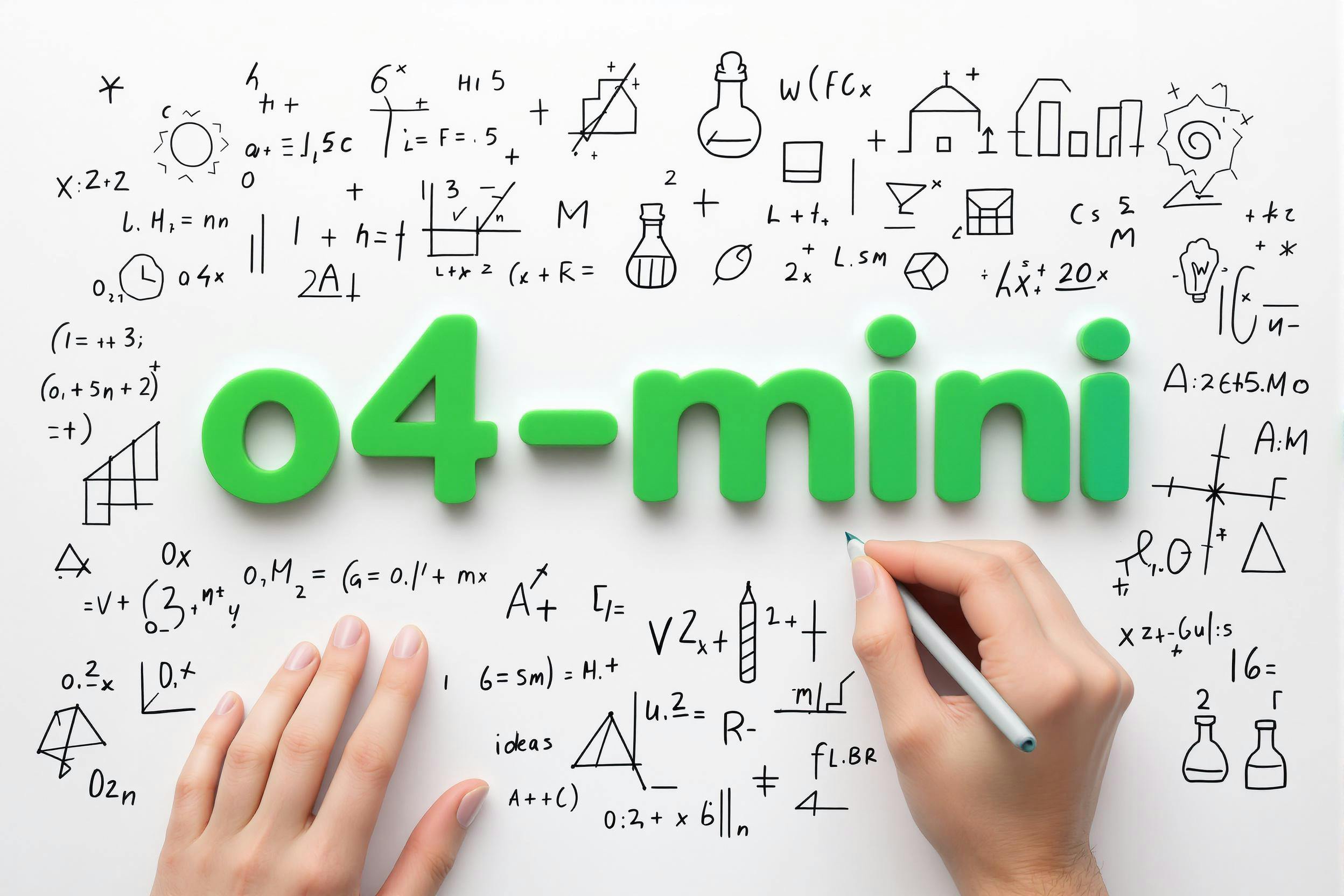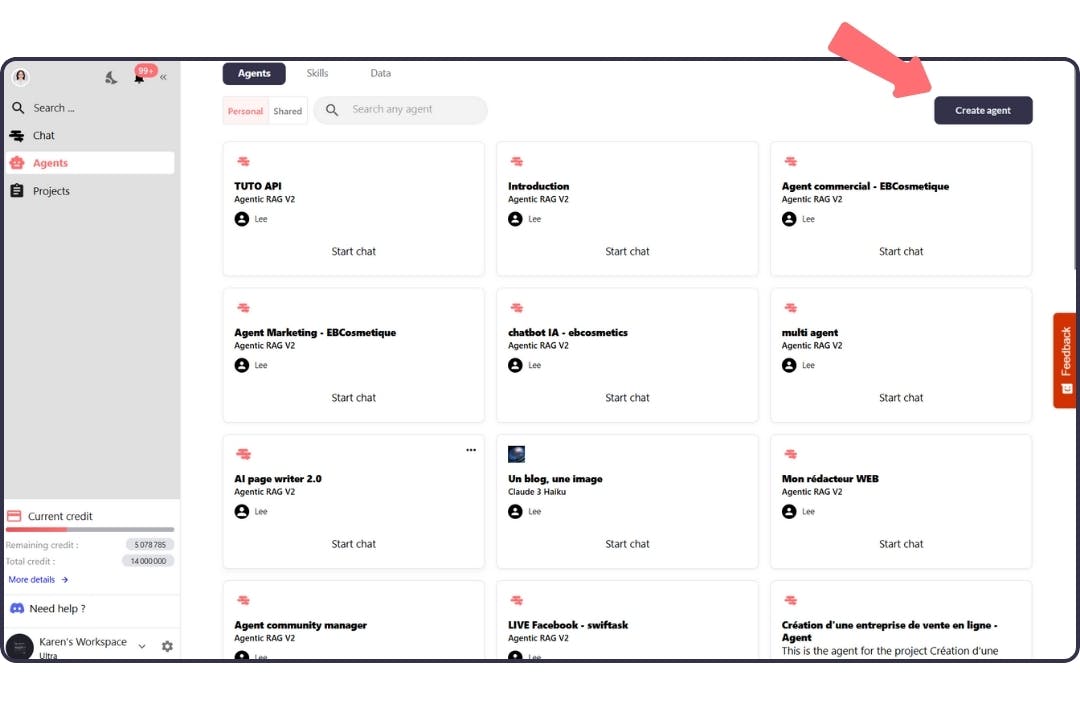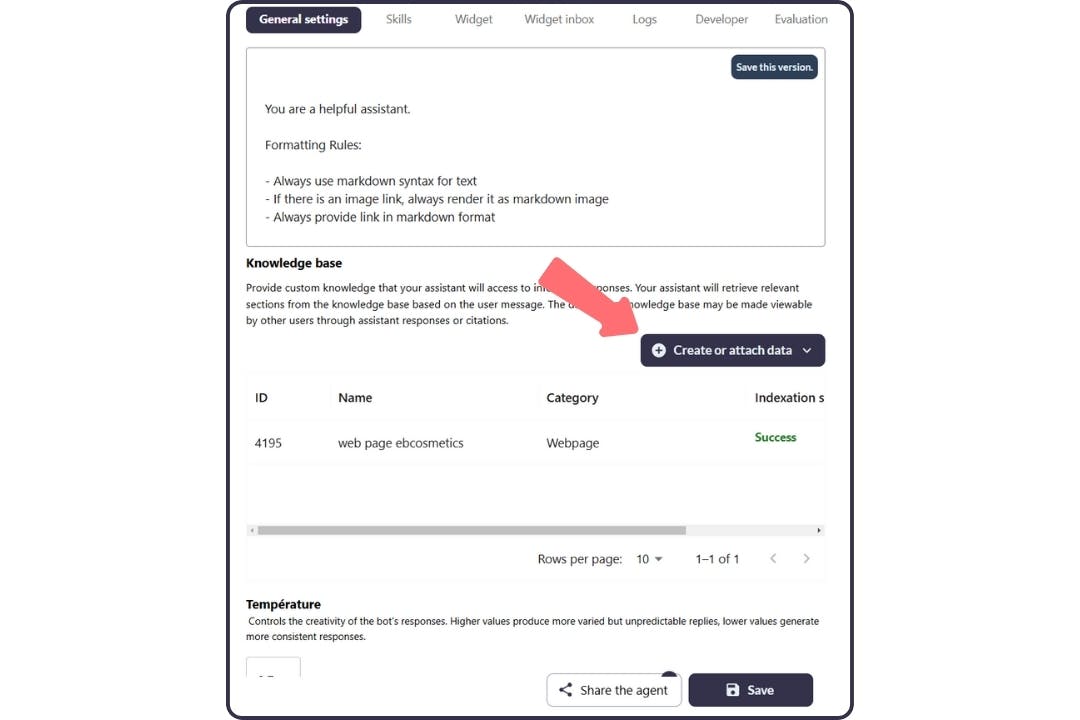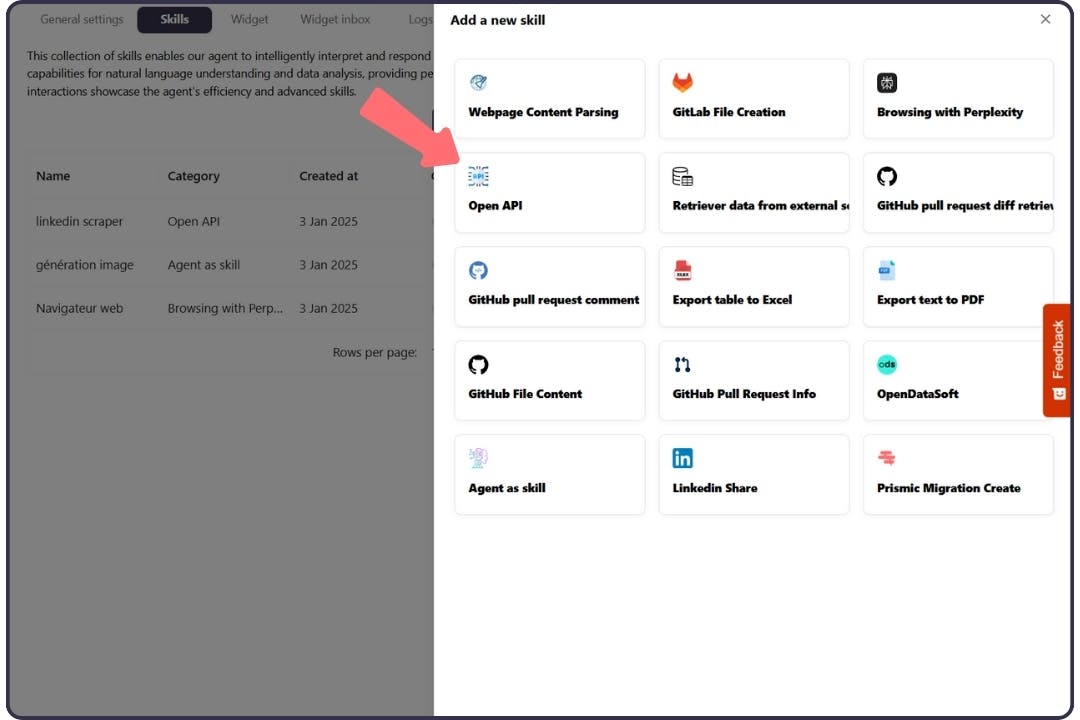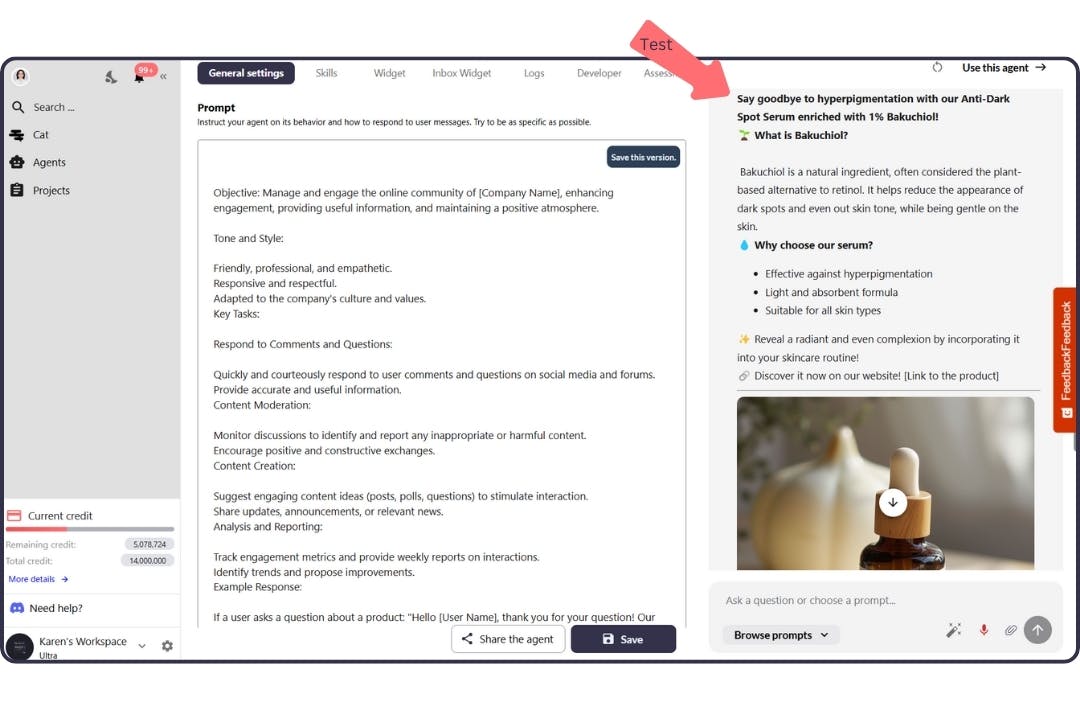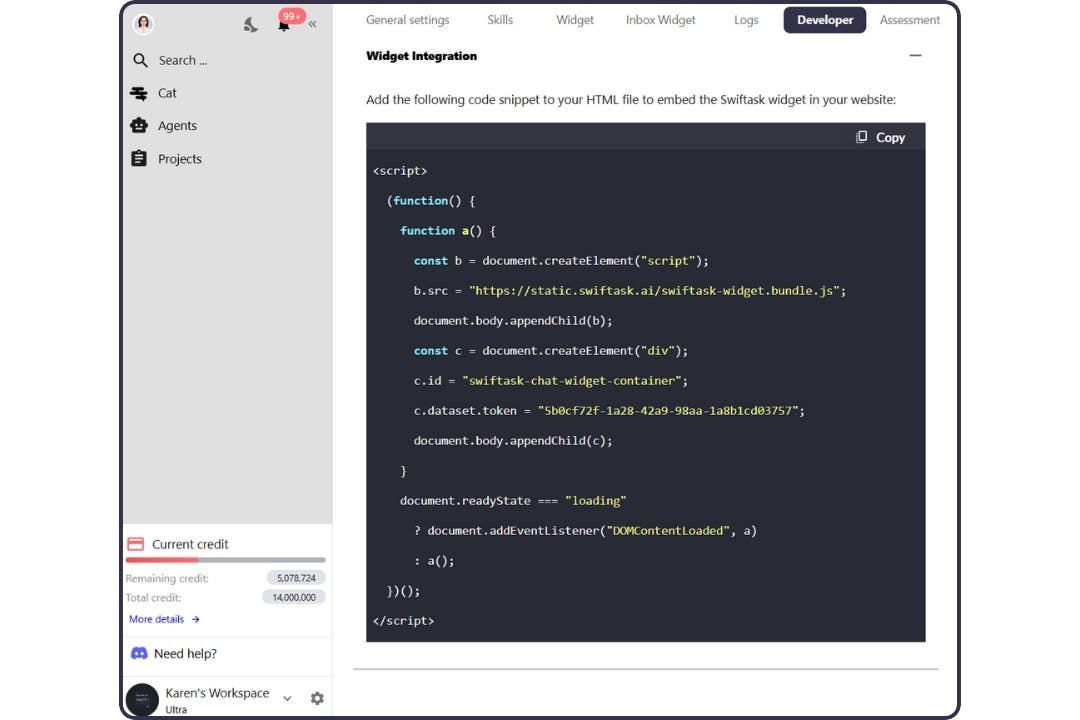The numbers speak for themselves: 87.2% of consumers report positive experiences with chatbots. This technology no longer just automates repetitive tasks; it completely redefines customer experience and optimizes business processes. Whether you're a company seeking operational excellence or a developer passionate about artificial intelligence, creating a successful chatbot requires a structured and innovative approach.
Ready to join the 47% of organizations already using chatbots for customer service? Discover how to design, develop, and deploy a virtual AI assistant that will make a difference in your industry.
Define objectives and use cases
Before diving into chatbot creation, it's essential to clarify your objectives and determine the specific use cases the chatbot should cover. Consider the following questions:
- What is the primary role of the chatbot? Customer service, technical support, sales, internal assistance, or entertainment?
- Who is your target audience? Existing customers, prospects, employees, young users, specific professionals?
- What problems should the chatbot solve? Reduce response time, automate FAQs, collect information, provide personalized recommendations?
A clear definition of objectives will help guide development and select appropriate features.
Choose the development platform
Choosing the development platform is crucial and will depend on your technical skills, budget, and desired features. Here are some popular options:
- No-Code Platform: Swiftask, the all-in-one AI tools, enables the creation of chatbots and AI agents through intuitive graphical interfaces, requiring no programming skills. Ideal for beginners or for corporate projects.
- Development Frameworks: If you have programming skills or want to create a customized chatbot with advanced features, frameworks like Microsoft Bot Framework, Dialogflow (Google), or Rasa are excellent choices.
- Specific Integrations: Depending on where you want to deploy your chatbot (website, Facebook Messenger, WhatsApp, Slack, etc.), ensure the chosen platform supports these channels.
Design the conversation flow
An effective chatbot must provide a smooth and natural user experience. Designing the conversation flow is thus a critical step:
- Map Interactions: Define possible scenarios and appropriate responses. Use flowcharts to visualize different conversation branches.
- Use NLP (Natural Language Processing): Integrate natural language processing technologies to allow the chatbot to understand and interpret user requests more humanly.
- Plan Escalation Scenarios: Determine when and how the chatbot should transfer the conversation to a human agent, especially for complex or sensitive queries.
Develop and integrate advanced features
Depending on your project's needs, you can add various features to enhance the user experience:
- Database and user management: Connect your chatbot to a database to store and manage user information, such as preferences or conversation histories.
- External APIs: Integrate APIs to retrieve real-time data, such as weather information, flight schedules, product updates, etc.
- Personalization: Use contextual information to personalize interactions, like using the user's name or recalling previous interactions.
- Multilingualism: If your target audience is international, ensure your chatbot can communicate in multiple languages.
Test and optimize the chatbot
Development is just the first step; rigorous testing is essential to ensure a high-performing chatbot:
- Functional Tests: Verify that all chatbot features work as expected and that responses are correct and relevant.
- Usability Tests: Assess the user experience by having external people test the chatbot and provide feedback on ease of use and conversation flow.
- Feedback Collection: Integrate feedback mechanisms directly into the chatbot so users can report issues or suggest improvements.
Deploy and promote your chatbot
Once your chatbot is tested and optimized, it's time to deploy it on chosen platforms:
- Integration on Website or Apps: Integrate the chatbot on your website, mobile app, or other relevant platforms using widgets or plugins provided by the development platform (Swiftask).
- Promotion: Promote your chatbot through marketing campaigns, newsletters, social media posts, or targeted ads. Clearly explain the chatbot's benefits and features to attract users.
- Monitoring and Analytics: Use analytics tools to track the chatbot's performance, such as response rate, user satisfaction rate, friction points, and most frequent interactions.
Maintain and Update the Chatbot
Deploying a chatbot is not the end of the process. To ensure its continued relevance and effectiveness, it's essential to maintain and update it regularly:
- Content Updates: Regularly add new conversation scenarios, update information, and adapt responses based on user feedback and business developments.
- Continuous Improvement: Analyze collected data to identify trends, emerging user needs, and areas needing improvement. Use this information to refine and optimize the chatbot.
- Security and Compliance: Ensure your chatbot complies with data security and privacy standards, such as GDPR in Europe. Implement measures to protect users' sensitive information.
Explore Advanced Features
To go beyond basic features and offer an exceptional user experience, consider adding advanced features:
- AI Integration: Use machine learning algorithms to improve understanding and prediction of user intentions, making the chatbot smarter and more responsive.
- Voice Recognition: Allow users to interact with the chatbot via voice by integrating voice recognition technologies.
- Sentiment Analysis: Integrate sentiment analysis tools to detect user emotions and adapt responses accordingly, offering a more empathetic and personalized interaction.
Case Studies and Inspiring Examples
To better understand the possibilities offered by chatbots, here are some inspiring examples:
- Amazon Customer Service (Alexa): Alexa, Amazon's virtual assistant, allows users to manage their connected home, place orders, obtain information, and more, providing a smooth and intuitive user experience.
- Travel Booking Chatbot (Expedia): Expedia uses a chatbot to help users book flights, hotels, and rental cars, facilitating the travel planning process with personalized recommendations.
- Health Virtual Assistant (Ada Health): Ada Health offers a chatbot that helps users assess their symptoms and get recommendations on next steps, providing preliminary medical assistance.
Anticipate future chatbot trends
The field of chatbots is rapidly evolving with technological advances. Here are some trends to watch:
- Increased AI and Machine Learning Integration: Chatbots will become increasingly intelligent, capable of understanding complex contexts and learning from past interactions.
- Advanced Personalization: Chatbots will offer even more personalized experiences by using contextual and behavioral data to tailor their responses.
- Multichannel and Omnichannel: Chatbots will be seamlessly integrated across different communication channels, enabling a consistent and smooth user experience regardless of the platform used.
- Enhanced Security and Privacy: With rising concerns about data protection, chatbots will be designed to ensure enhanced security and better user privacy management.
Creating an effective website chatbot is a process that combines strategic planning, thoughtful design, and judicious use of available technologies. By following the steps detailed in this guide—from defining objectives to continuous maintenance—you will be able to develop a chatbot that not only meets your users' needs but also contributes to optimizing your business processes. Whether it's to improve customer service, automate tasks, or offer personalized assistance, a well-designed chatbot can become a valuable asset for your business.
Invest time in understanding your users, choose the right technologies, and don't hesitate to constantly iterate to improve your chatbot. With best practices and a user-centered approach, you can create a chatbot that stands out for its efficiency and user-friendliness.
